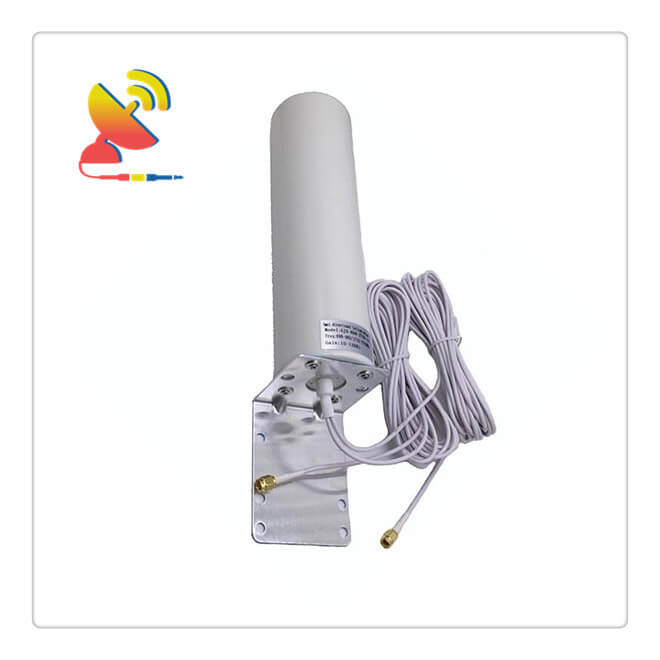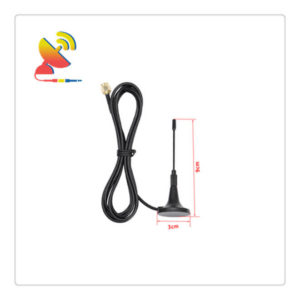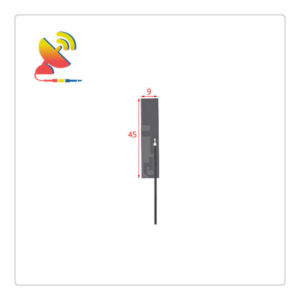Description
What is a 4G MIMO Antenna Omnidirectional Fiberglass Antenna?
The 4G MIMO Antenna omnidirectional fiberglass antenna style CTRF-ANTENNA-MIMO-7027-23065-SMA is an indoor-outdoor antenna waterproof IP67 grade Omnidirectional fiberglass 4G MIMO Antenna with full frequency 698-960MHz, 1710-2700MHz multi-band 4G MIMO antenna extension coaxial cable RG174 SMA connector antenna.
The 4G MIMO Antenna Omnidirectional Fiberglass Antenna is available at C&T RF Antennas Inc, the 4G MIMO antenna manufacturer in China.
C&T RF Antennas Inc provides internal & external antennas with the antenna radio frequencies such as NFC, 169MHz, 230MHz, 315MHz, 433MHz, 868MHz, 915MHz, VHF&UHF, Lora, NB-IoT, ADS-B, GSM, GNSS, Wifi 2.4GHz, 5.8GHz, Cellular 2G 3G 4G LTE, GPS, 5G NR, etc.
C&T RF Antennas Inc. provides RF antennae with Omni & Directional antenna types such as Dipole Antennas, Whip Antennas, Marine Antennas, Router Antennas, MIMO Antennas, Combo Antennas, PCB Antennas, FPC Antennas, Spring Antennas, Magnetic Antennas, Sector Antennas, Yagi Antennas, and Accessories, etc, for IoT & M2M industries.
Contact us for more details on the 4G MIMO Antenna Omnidirectional Fiberglass Antenna such as 4G MIMO Antenna price, 4G MIMO Antenna datasheet, 4G MIMO Antenna inventory, or the other 4G MIMO antenna types.
4G MIMO Antenna Omnidirectional Fiberglass Antenna Specifications
4G MIMO Antenna Omnidirectional Fiberglass Antenna Electrical Specifications |
|
| RF Antenna Type | Omni 4G MIMO Antenna |
| Model | CTRF-ANTENNA-MIMO-7027-23065-SMA |
| Frequency Range | 698-960, 1710-2700MHz |
| Gain | 6-8dBi |
| VSWR | ≤2.0 |
| Impedance | 50 Ω |
| Polarization | Vertical |
| Directional | Omni-directional |
| Connector | SMA |
| Max Power | 50W |
| Lightning Protection | DC-Ground |
4G MIMO Antenna Omnidirectional Fiberglass Antenna Mechanical Specifications |
|
| Dimension | 230*65mm |
| Weight | Approx. 500g |
| Radome Material | PVC |
| Operation Temperature | -20˚C ~ +80˚C |
| Storage Temperature | -40˚C ~ +80˚C |
| Color | Gray |
| Antenna Design | Dipole Array |
| Mounting | SMA x2 |
| Safety Emission and other | RoHS Compliant |
| Applications | ISM/SCADA/Utilities, IoT/M2M/NB-IoT/LoRa, 2G 3G 4G LTE/LTE-IoT, GSM GPRS UMTS, etc. |
4G MIMO antenna technologies
Multiple Input Multiple Output (MIMO) system refers to a communication system that uses multiple antennas at the transmitter and receiver at the same time.
Studies have proved that MIMO technology is very suitable for wireless broadband communication systems in complex wireless signal propagation environments in cities, and the spectrum efficiency in indoor propagation environments can reach 20-40 bit/s/Hz; while using traditional wireless communication technology in mobile cellular.
The spectral efficiency in the system is only 1 to 5 bit/s/Hz, and it is only 10 to 12 bit/s/Hz in a point-to-point fixed microwave system. Generally, the multipath of the radio frequency signal will cause fading, which is regarded as harmful.
However, the research results show that for MIMO systems, multipath can be used as an advantageous factor. As an important means of increasing the data transmission rate, MIMO technology has attracted more and more attention and is considered to be a revolution in a new generation of wireless communication technology.
1. Three main technologies of the MIMO system
Currently, MIMO technology mainly uses three multi-antenna technologies, including space-time coding of transmit diversity, spatial multiplexing, and beamforming, to improve the wireless transmission rate and quality.
1.1 Space-time coding of transmit diversity
There are two main types of space-time codes based on transmit diversity technology, namely, space-time block codes (STBC) and space-time trellis codes (STTC).
Although the space-time coding scheme cannot directly increase the data rate, the information is transmitted independently and irrelevantly through these parallel spatial channels, so that the signal obtains diversity gain at the receiving end, creating conditions for the realization of high-order modulation of the data.
1.1.1 Space-Time Block Code (STBC)
STBC performs joint coding on the data stream at the transmitting end to reduce the symbol error rate caused by channel fading and noise. It increases the signal redundancy at the transmitting end so that the signal obtains diversity gain at the receiving end, space-time block code It transmits the same information from multiple antennas after orthogonal encoding.
Multi-antenna receivers can separate and decode these data substreams by using advanced space-time coding processing to achieve optimal processing.
Analysis of 3 technologies and application scenarios of MIMO antenna
STBC is a very simple transmission diversity technology proposed by AlamouTI in 1998. Because of its simple structure and good performance, it quickly entered the 3GPP standard. STBC essentially transmits the same information from two antennas after orthogonal encoding.
Due to the orthogonality of the two signals, the two independent signals can be distinguished at the receiving end, only a simple linear combination is required. Diversity gain can be obtained.
However, there are still some problems in the construction of the STBC orthogonal code group. For the real signal constellation (PAM constellation), it can construct a space-time coding algorithm with a coding rate of 1.
However, for a common complex signal constellation, such as MQAM (such as 16QAM) or MPSK (such as 8PSK), when the number of transmitting antenna elements is greater than 2, whether there is a code group with a coding rate of 1 remains to be further studied.
At present, for systems where the number of transmitting antenna elements is equal to 3, 4, and greater than 4 if a complex signal constellation is adopted, the maximum space-time coding rate can only reach 3/4 and 1/2.
It can be seen that for a high-rate multi-antenna wireless communication system using high-order modulation, if the space-time block coding algorithm is directly used, it is impossible to fully utilize the effectiveness of the system.
Therefore, looking for better space-time block codes has become a research direction; in addition, how to make full use of the advantages of space-time block codes in frequency-selective channels and time-selective channels is also a research topic.
In short, the current STBC is still based on the transmit diversity technology with the number of transmit antenna elements equal to 2.
1.1.2 Space-Time Trellis Code (STTC)
STTC is developed from space-time delay diversity, and space-time delay diversity can be regarded as a special case of space-time trellis codes. Space-time trellis codes have the characteristics of convolutional codes, which combine coding, modulation, and transmit diversity, which can simultaneously obtain diversity gain and coding gain, and greatly improve the performance of the system.
The space-time trellis code uses a certain trellis diagram to transmit the same information through multiple antennas and uses a Viterbi decoder based on Euclidean distance to decode at the receiving end. Therefore, the decoding complexity is relatively high, and the decoding complexity will increase exponentially as the transmission rate increases.
The early diversity model adopted delayed transmission diversity. The encoded data is first repeated once and then divided into 2 identical data streams through a serial/parallel converter.
One of the data streams is modulated and sent directly from one antenna; the other data stream is modulated and sent from another antenna after a delay of one symbol.
Since data is sent on two antennas at the same time, the only difference is that all data is delayed by one symbol, so although delay coding is adopted, there will be no loss of frequency band efficiency.
At the receiving end, demodulation can be performed through Viterbi decoding. This delayed diversity is the prototype of the space-time code. It can be proved that the STTC mentioned at present can be realized by delaying transmission diversity.
Analysis of 3 technologies and application scenarios of 4G MIMO antenna
The emergence of delay diversity technology makes people naturally think about whether there is a better encoding method that can achieve better performance while maintaining the same data rate and without sacrificing bandwidth without repeating encoding.
In this way, a new coding method is produced, which is space-time coding that integrates space division, time division, and modulation.
In space-time coding, STTC can obtain the maximum coding gain and diversity gain without increasing the transmission bandwidth and changing the information rate.
1.2 Spatial reuse
The system divides the data into multiple pieces and transmits them on multiple antennas at the transmitting end. After the receiving end receives a mixed signal of multiple data, it uses the independent fading characteristics between different spatial channels to distinguish these parallel data streams.
So as to achieve the purpose of obtaining a higher data rate in the same frequency resource. Spatial multiplexing is different from transmit diversity technology in that it transmits different information on different antennas.
The spatial multiplexing technology transmits independent signals at the transmitting end, and the receiving end uses interference suppression methods for decoding. At this time, the air interface channel capacity increases linearly with the increase in the number of antennas, which can significantly increase the transmission rate of the system.
Analysis of 3 technologies and application scenarios of 4G MIMO antenna
When using spatial multiplexing technology, the receiving end must perform complex decoding processing. The main decoding algorithms in the industry include the zero-forcing algorithm (ZF), MMSE algorithm, maximum likelihood decoding algorithm (MLD), and Bell Labs layered space-time processing algorithm (BLAST).
The zero-forcing algorithm, the MMSE algorithm is a linear algorithm, that is relatively easy to implement, but it requires a high signal-to-noise ratio and poor performance; the MLD algorithm has good decoding performance, but its decoding complexity increases with the number of transmitting antennas The increase increases exponentially.
Therefore, when the number of transmitting antennas is large, this algorithm is not practical; the BLAST algorithm, which combines the advantages of the aforementioned algorithms, is the best in performance and complexity.
The BLAST algorithm is an effective space-time processing algorithm proposed by Bell Labs and has been widely used in MIMO systems. The BLAST algorithm is divided into the D-BLAST algorithm and the V-BLAST algorithm.
The D-BLAST algorithm was proposed by G.J. Foschini of Bell Labs in 1996. For the D-BLAST algorithm, the original data is divided into several sub-data streams, each sub-stream is independently coded and is cyclically allocated to different transmitting antennas.
The advantage of D-BLAST is that the data of each substream can reach the receiving end through different spatial paths, thereby improving the reliability of the link, but its complexity is too large to be used in practice.
1.3 Beamforming technology
The beamforming technology is also called smart antennas. By phase weighting the correlation of the output signals of multiple antennas, the signals from in-phase superposition in one direction and phase cancellation in other directions to achieve signal gain.
When the system transmitting end can obtain channel state information (such as the TDD system), the system will adjust the phase of each antenna’s transmit signal (data is the same) according to the channel state to ensure the maximum gain in the target direction;
When the system transmitting end does not know the channel state, the random beamforming method can be used to achieve multi-user diversity.
2. The advantages and disadvantages and application scenarios of the three technologies
Spatial multiplexing can maximize the average transmission rate of the MIMO system, but can only obtain limited diversity gain. When the signal-to-noise ratio is small, it may not be possible to use high-order modulation methods (such as 16QAM, etc.).
Wireless signals are frequently reflected in dense urban areas, indoor coverage, and other environments, making the fading characteristics between multiple spatial channels more independent, thereby making the effect of spatial multiplexing more obvious.
In the suburbs and rural areas of the wireless signal, the multipath component is small, and the correlation between the spatial channels is relatively large, so the effect of spatial multiplexing is much worse.
Space-time coding of the transmitted signal can obtain additional diversity gain and coding gain so that high-order modulation can be used in a wireless environment with a relatively small signal-to-noise ratio, but the rate bonus brought by spatial parallel channels cannot be obtained. Space-time coding technology can also perform well on occasions with greater wireless correlation.
Therefore, in the actual use of MIMO, spatial multiplexing technology is often used in combination with space-time coding. When the channel is in an ideal state or the correlation between channels is small, the transmitter adopts a spatial multiplexing transmission scheme, such as dense urban areas, indoor coverage, etc.;
When the correlation between channels is large, a space-time coding transmission scheme is used, such as in suburban, and rural areas. This is also the method recommended by 3GPP in the FDD system.
Beamforming technology can achieve better signal gain and interference suppression when it can obtain channel state information, so it is more suitable for TDD systems.
Beamforming technology is not suitable for dense urban areas, indoor coverage, and other environments. Due to reflection, on the one hand, the receiving end will receive too many paths of signals, resulting in poor phase superposition; on the other hand, a large number of multipath signals will cause DOA information to be difficult to estimate.






Reviews
There are no reviews yet.